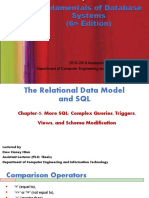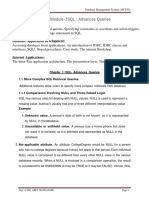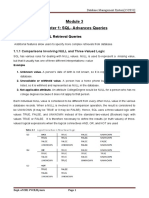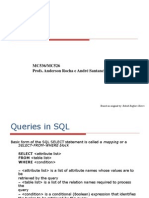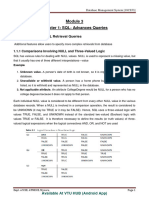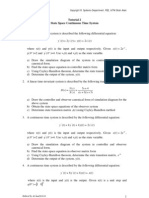0% found this document useful (0 votes)
325 views24 pagesMore Complex SQL Retrieval Queries
Uploaded by
SHRISHANTHA SCopyright
© © All Rights Reserved
We take content rights seriously. If you suspect this is your content, claim it here.
Available Formats
Download as PDF, TXT or read online on Scribd
0% found this document useful (0 votes)
325 views24 pagesMore Complex SQL Retrieval Queries
Uploaded by
SHRISHANTHA SCopyright
© © All Rights Reserved
We take content rights seriously. If you suspect this is your content, claim it here.
Available Formats
Download as PDF, TXT or read online on Scribd
/ 24





